Ushuaia

By Jaimy de Vries
Ushuaia is the southernmost city in the world and it refers itself to the end of the world. While actually some consider Puerto Williams the southernmost. Ushuaia is on the southern coast of the Argentina province Tierra del Fuego, on the beagle channel and it variety is enormous with fairy-tale forest, Japanese like botanical gardens and peat bogs. It is a wonderful place to get your mind at ease. You have several cool hiking trails around the coast or to a glacier. It’s a year-around-destination. I prefer the summer/fall, because in the summer months you can even go to Antarctica by cruise (what I did). In the winter you can ski or take a dogsled tour.
First stop
Ushuaia was my first stop in Argentina. I was here in February to take a cruise expedition to Antarctica. Before I got an the boat I stayed at a hotel. This was to prevent getting COVID-19, otherwise the whole Antarctica trip must be canceled and that would’ve cost me a lot of money. But I stayed negative and went to Antarctica for 2 weeks.
In March I came back and I stayed at a lovely B&B with my hosts Ruby and Gustavo. They helped me with making a plan for my 1st week visit and brought me to some amazing hiking trails. They were so nice! I miss them!
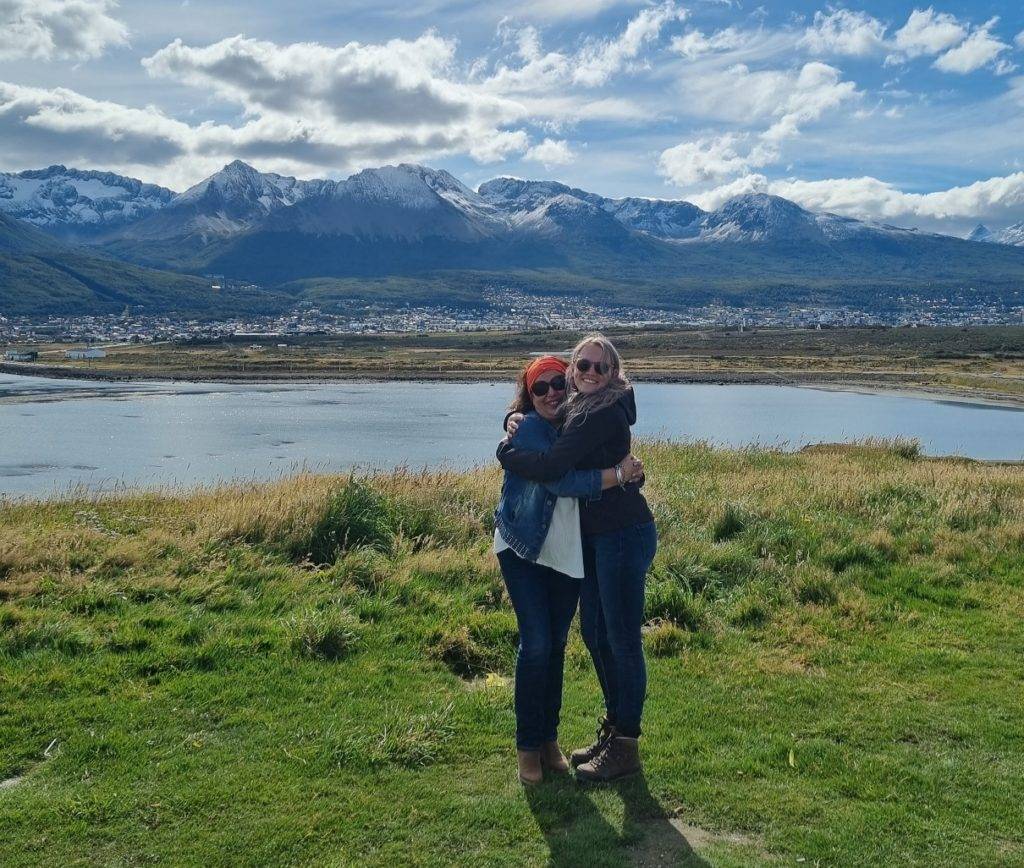
Together with Ruby
History of Ushuaia
The name Ushuaia comes from the Yaghan language, the native residents , Ushuaia: ush and waia (“bay” or “cove”) means “deep bay” or “bay to background”. Till the end of the 90-century native indians lived here. The city foundation was in October 12, 1884 when an argentine expedition arrived to establishing a sub-prefecture. The Argentina president wanted to civilize this place, so he send ships. First Ushuaia had only a little shop, dirt roads and a small amount of residents. They made colorful houses to make this place a bit more cheerful. At the beginning of the 20th century there was a prison build. The prison of Ushuaia is part of the city’s history and the prisoners were also considered the “first settlers”. That is because they made the city; they build roads, churches, a townhall, a railway and much more. They build the famous railway (Tren del Fin del Mundo – train to the end of the world) to the now called national park Tierra del Fuego to cut tree’s and gather lots of wood to build more building for the city. Ushuaia was all about the prison. If you weren’t a prisoner, you were a guard or family off the people that worked for the prison. You can say Ushuaia was the prison.
Weather
Ushuaia has mild winters and cool summers, that is because of its location by the sea. The coolest month is July with an average temperature of 1.3°C and January is the warmest with an average of 9.6°C. But the weather can change rapidly in Ushuaia. You can experience four seasons in just one hour: from a sunny day in the fall, to lots of rain and strong winds. You can love it or hate it. When I was walking in Ushuaia I was thinking about a Swedish saying: “Det finns inget dåligt väder, bara dåliga kläder” what means “there is no such thing as bad weather, only bad clothes”. So, make sure you’re well prepared for these weather changes. Bring a rain and wind jacket with you and wear lots of layers. If it’s too warm you can simply pull a layer off.
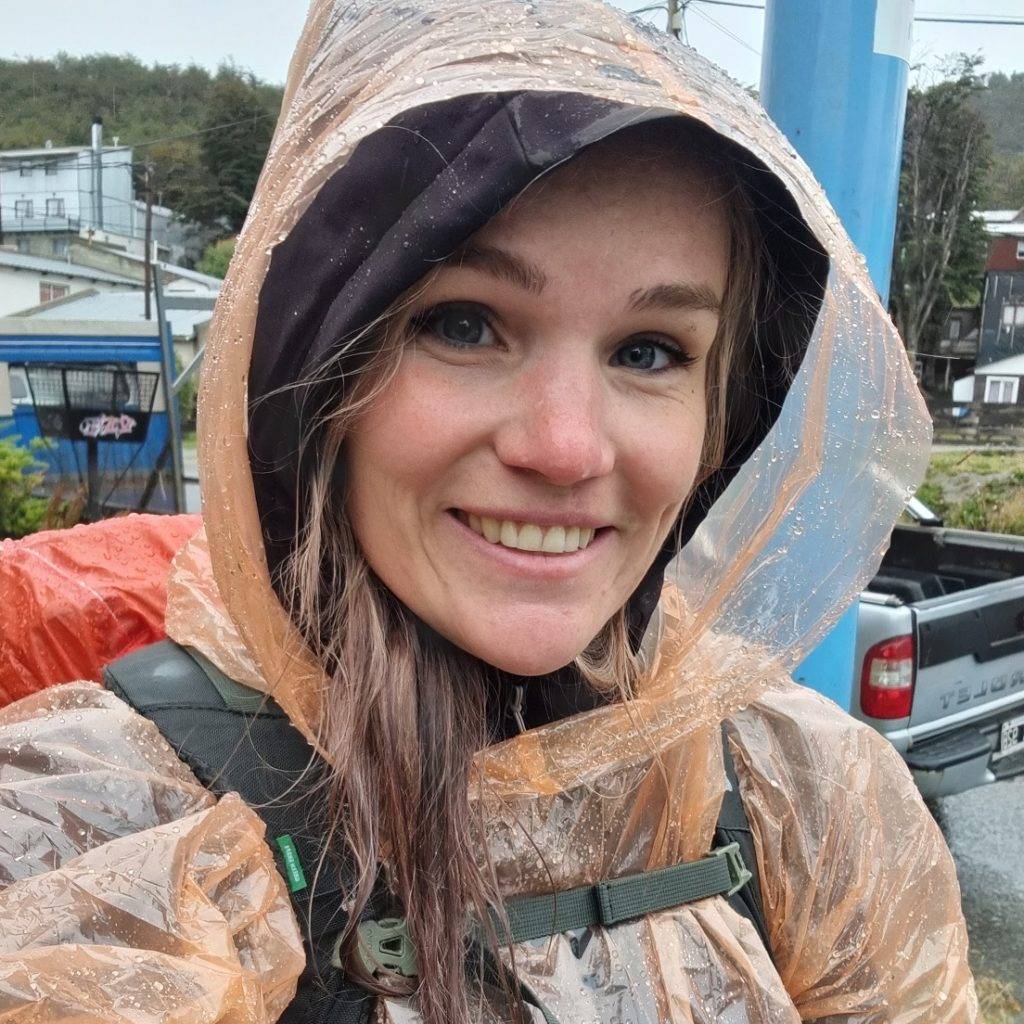
There is no bad weather, only bad clothing
Flora & Fauna
The landscape in Ushuaia is abrupt as a result of glaciation in bygone eras. The Andes here are a series of mountain chains divided by deep valleys with lakes, rivers, peat bogs and forest. I was surprised how the vegetation type differ from one kilometer after the other. For example if you walk through the mountainside, then you have big Lenga forests, or when you walk to the valley you have damper planes with lots of Guindo or Coihue de Magallanes trees. The evergreen Guindo trees that was turning orange-yellow because of the fall reminded me of a Japanse Botanical garden. It was beautiful, like a fairy-tail forest. I also saw lots of Turba planes and peat bogs, where I felt like I was walking on a matrass. Very nice for your knees by the way if you need to make a descent!
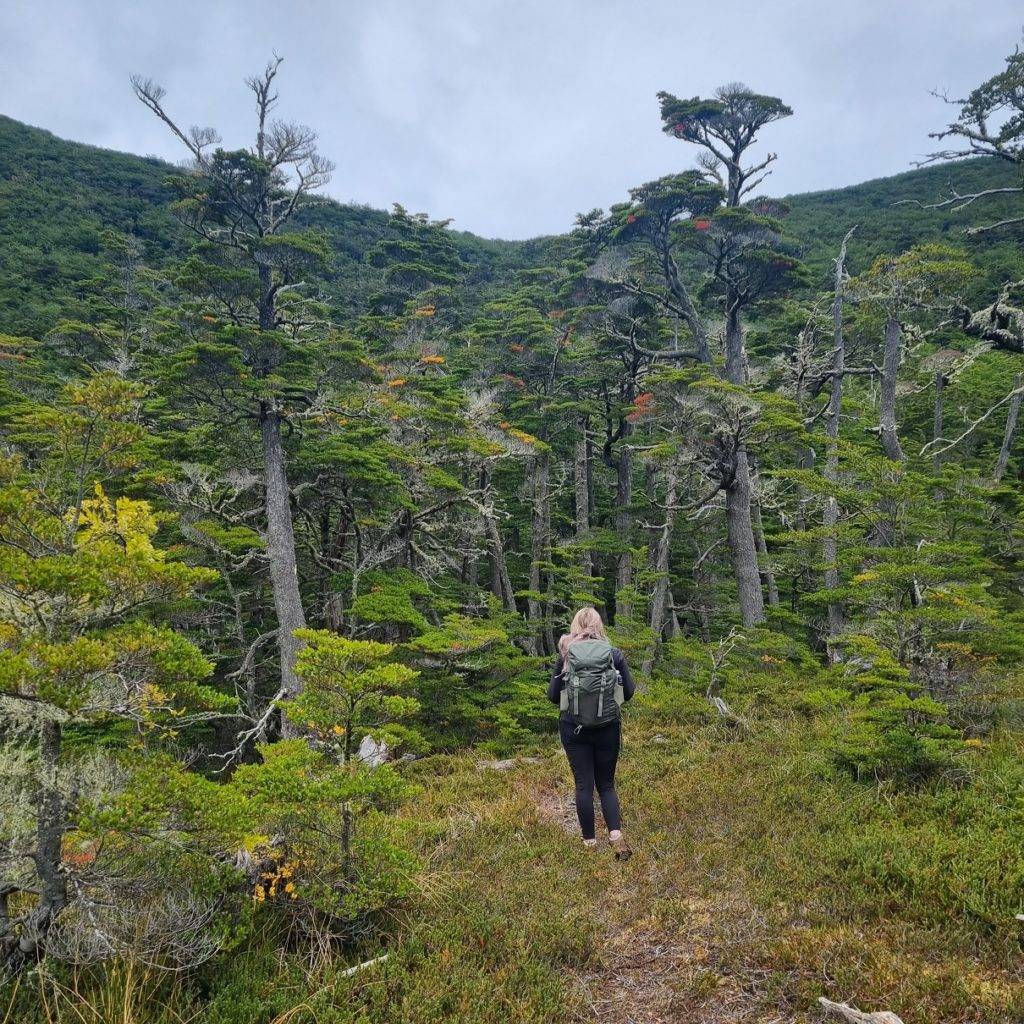
Love these evergreen Guindo trees
You can also see lots of beaver dams and dead trees on the hiking trails. The beaver was not a native animal, it was introduced in 1946 from North-America and since then it has caused very serious alternations to the landscape and woods, even to the native fauna. Ushuaia has a limited of variety of fauna with 20 species of mammals. One of them is the Fuegan Red Fox, tame and abundant. And you have the Guanaco, but they’re mostly a denizen of the heights and only descending in the winter for shelter. What also was quite spectacular for me was seeing so many wild horses around Cerro Alarken and I saw some new bird types, like the Kelp goose, Banduria Austral, Magallanic woodpecker and an Andes Condor.
You have lots of thorny bushes full of berries. A hiking guide told me you can eat all the berries you can find in Ushuaia. For example you have the El Calafate blue berry and the diddledee berry. I tried all the berries I could find and I still life without any stomach pain! So it’s safe guys!
When I was on a bus tour I heard a funny fact about the fauna in Tierra Del Fuego. In Argentina you have ants, except in Tierra Del Fuego. Why? That’s still unknown. There is a big research center in Ushuaia that’s looking into these strange nature phenomena’s of Ushuaia.
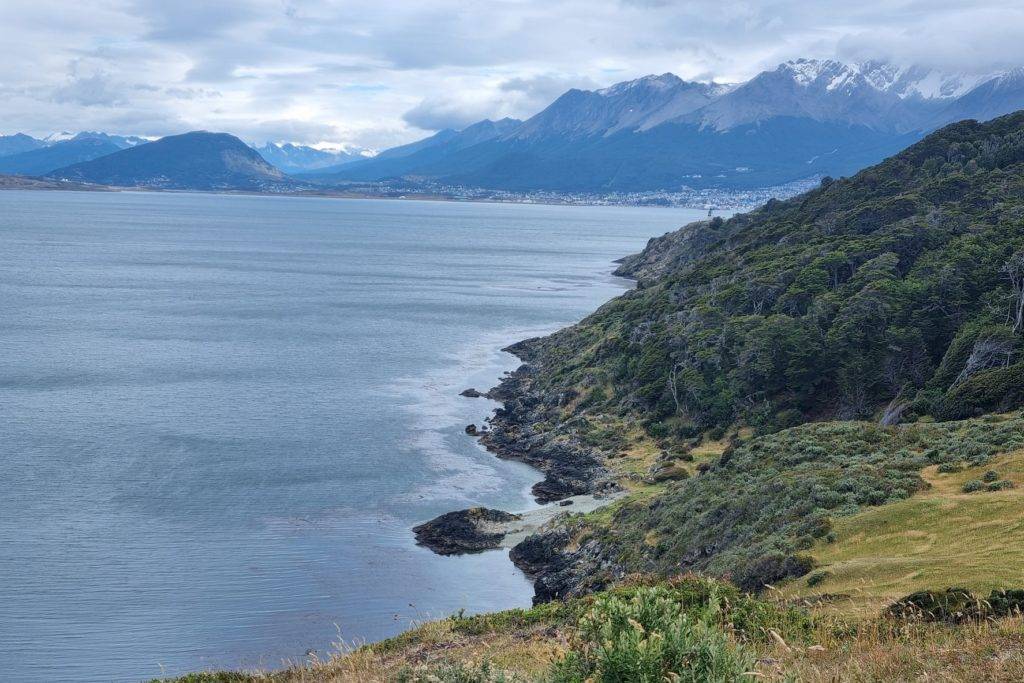
View over the Beagle Channel
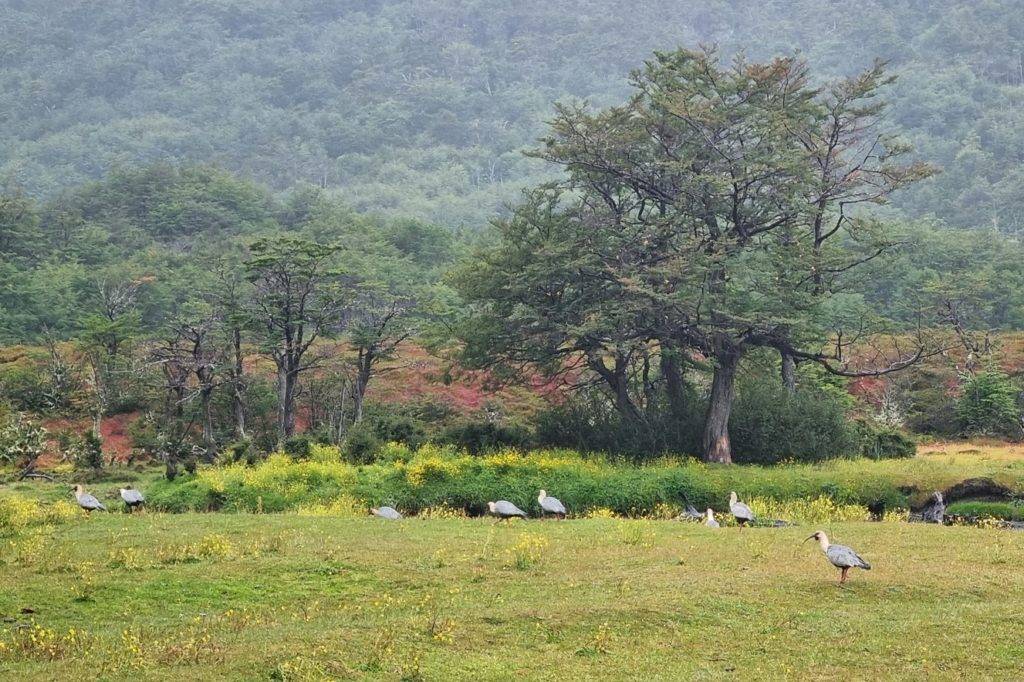
Group of Banduria Australs
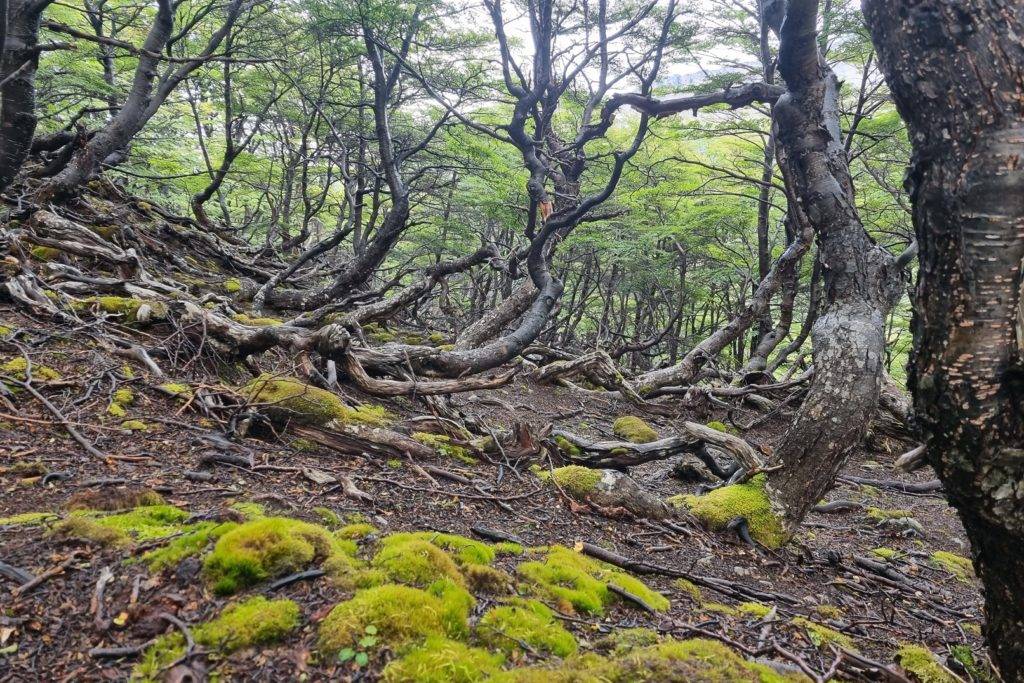
Green forests
Culture
When I was in Ushuaia I got to learn a lot about the Argentinean culture. Argentinean people are really friendly and they would love to help others. You can ask them almost anything! Hitch hiking for example is very common in smaller towns (not in big cities like Buenos Aires – that’s dangerous). Most of them speak very little English, so if you know a little bit of Spanish that helps a lot.
I found out, especially in Ushuaia that they have lots and lots of dogs. They mainly live in the garden and have all the freedom. They love to walk outside the fence, over the streets and meet other dogs. For me it was weird to see, because we let our dogs stay inside and put hem on a leash when we are outside. You don’t see dogs walking and running over busy roads in the Netherlands like you see here in Ushuaia. The dogs are well cared for, the Argentinean people love dogs. In Ushuaia you even have a dogs cemetery too.
What to do in Ushuaia
# 1 - explore downtown
Ushuaia is a small town. It has an old city center, where Avenida San Martín is the main shopping street. You have lots of tourist shops, cafes, kiosk and tourist centers up there. You can take a nice stroll around the boulevard an walk to the well known Ushuaia statue. Next to the town hall (Municipalidad de Ushuaia) you have the Museo del Fin del Mundo, the Museo de Maquetas and the maritime museum that is located in the former prison.
A nice and easy way to learn more about the city center is to take the blue tourist bus that cost your around 1800 pesos.
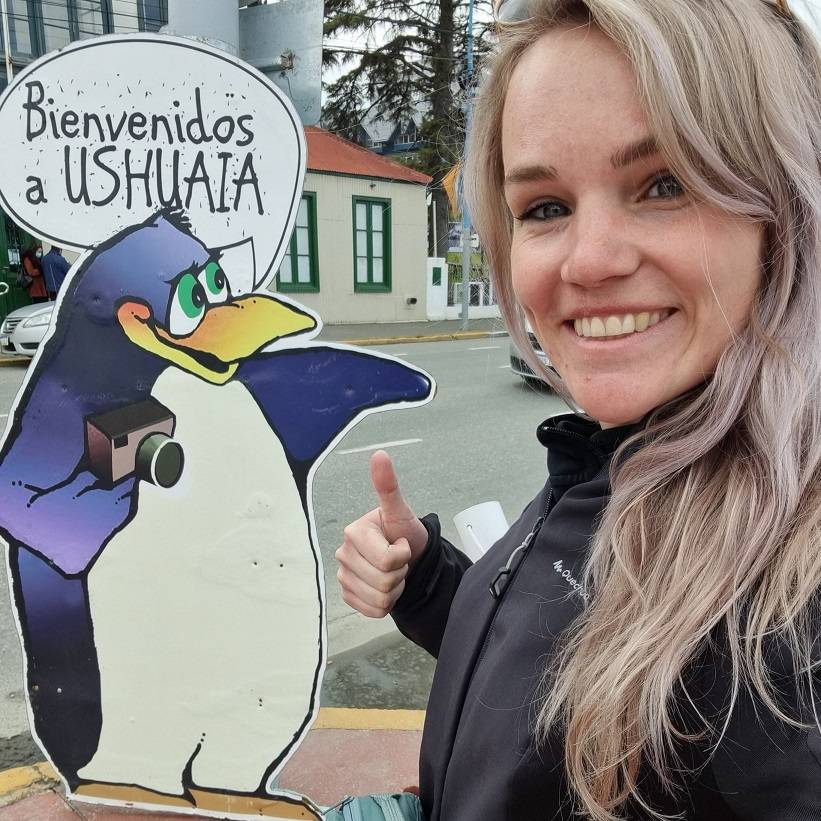
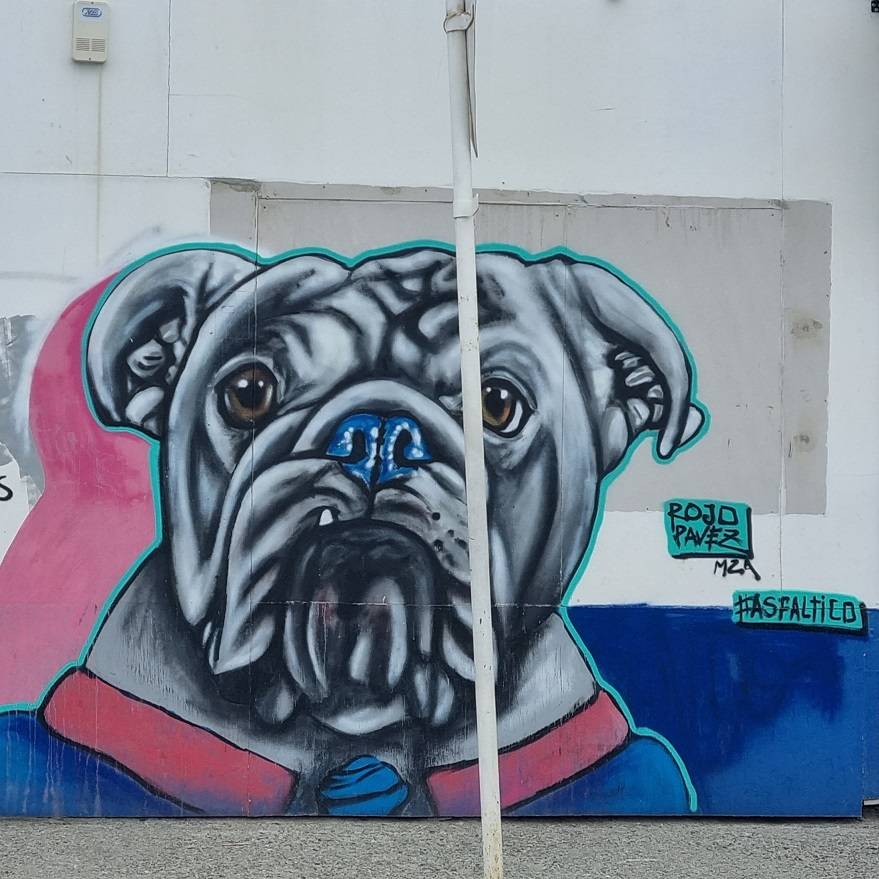
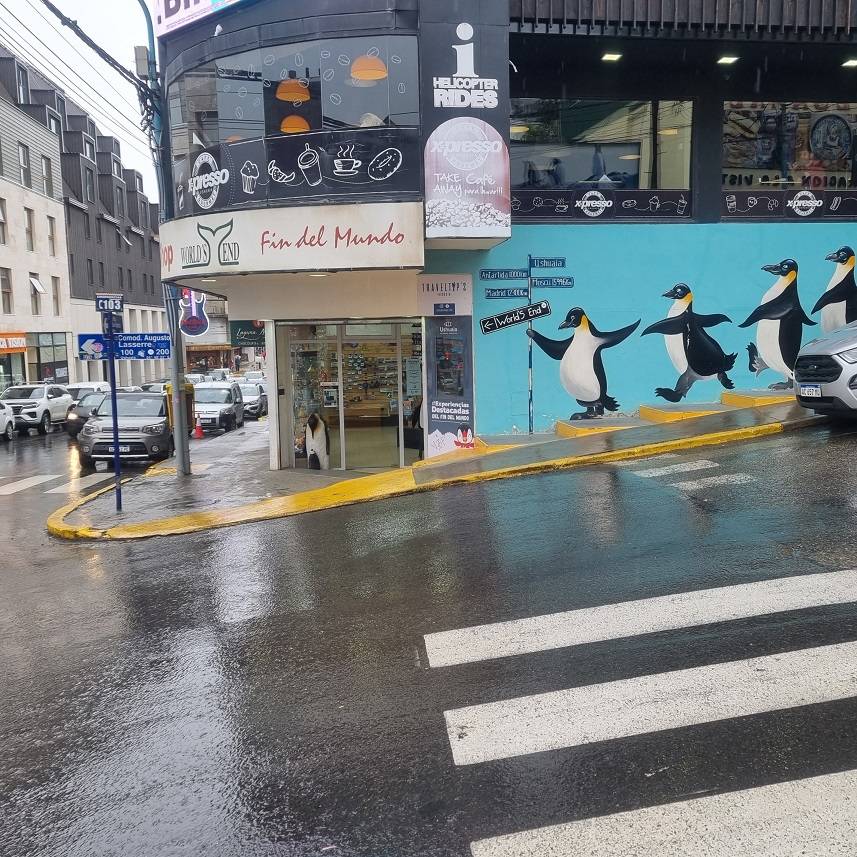
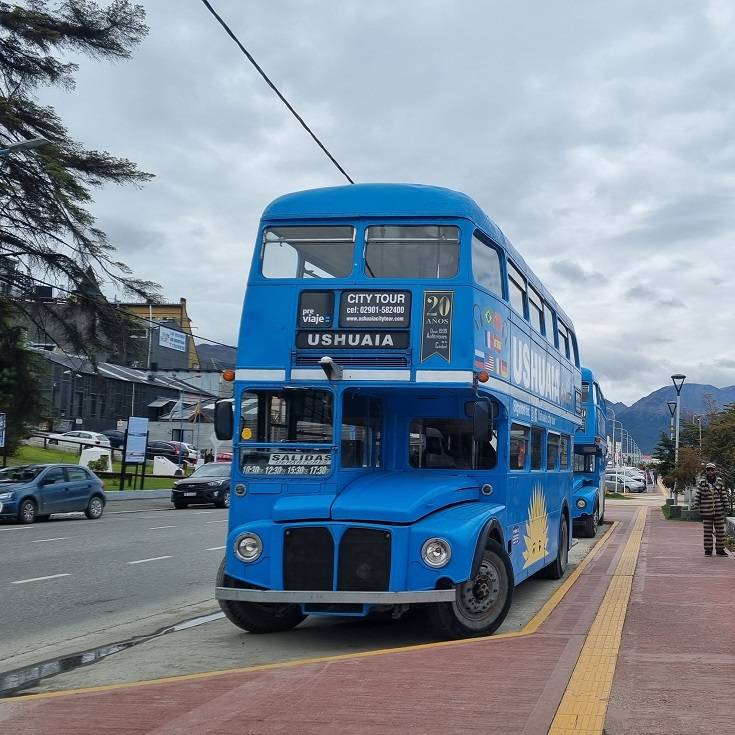
# 2 - Tren del Fin Mundo
To the west of the city, close to the national park, you have a tourist railway. It’s called the Tren del Fin del Mundo, translated as the “the end of the world train”. The railway was built by the prisoners for the prisoners to collect wood from the forest. But it has fallen into disuse after its closure. It has been refurbished and travelers can cover the seven kilometer route in wagons. At the beginning you can take a fun picture for 1000 pesos with people dressed like prisoners. It is a fun trip in a very old steam locomotive where you can enjoy the scenery of Tierra Del Fuego National park. You have two stops along the way. You can take a one-way (at the end in the national park from where you can hike) or a two-way ticket back.
It is quite expensive, you pay 4.900 pesos for a two way ticket + park fee of 2100 pesos.
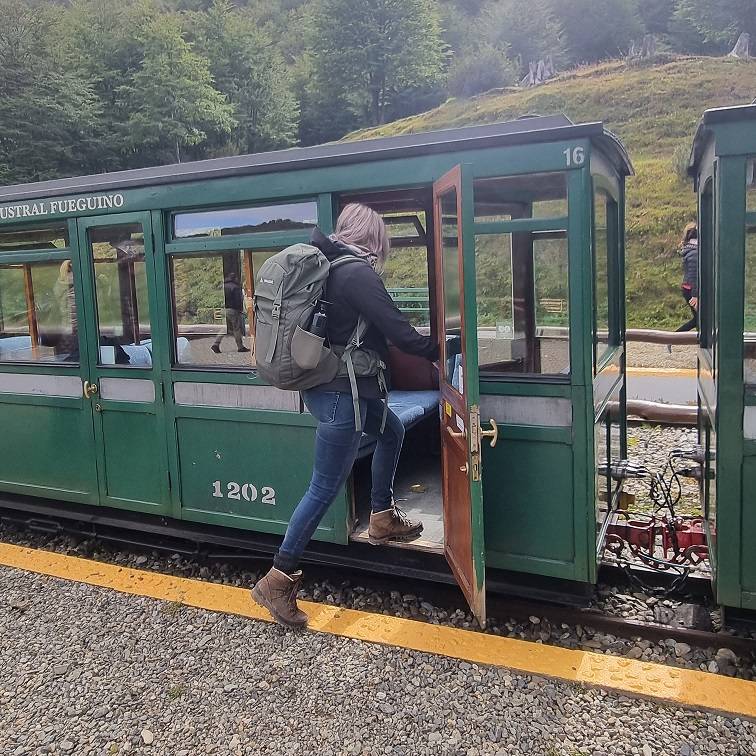
# 3 - Hiking
Ushuaia is a great place for some hiking trips. I took three amazing hiking trips on the advice of the locals in Ushuaia. But there are lots more nice hiking trails to take, also some multi-day hikes. Underneath I’ll tell you a bit more about my hiking trails and other recommendations.
Estancia Tunel
The Estancia Tunil trail is a nice half-day trek to a small village called Estancia Tunel where Argentinean people live off the radar. It’s a very beautiful hike along the coast with lots of Evergreen Guindo tree’s and Lengo forest. But it takes you 1-2 hours to walk from Ushuaia to the start of the trail and of course 1-2 hours to walk back. But you can drive up to the start of the trek and park your car there, or take a taxi.
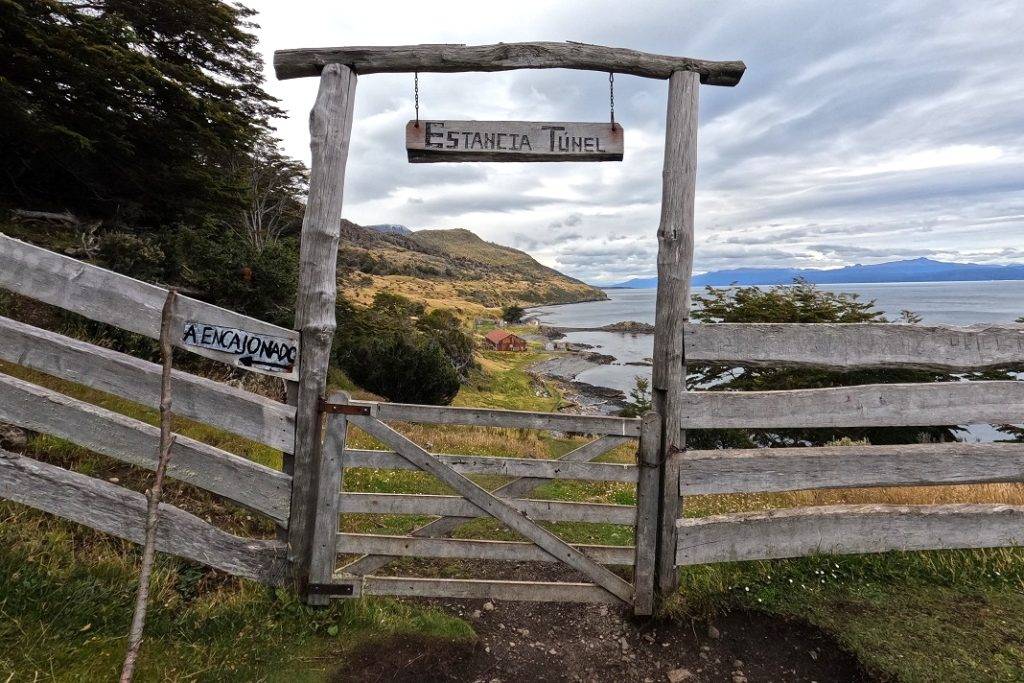
Glaciar Vinciguerra & Laguna de los Tempanos
This is an amazing 8 hour trek to the Glaciar Vinciguerra. I could Join Jaquelina and Ezekiel, an Argentinan couple, with an early hike towards the Glaciar Vinciguerra. When I woke it it was pouring rain. I was wondering if they still want to go, or wait till it gets dry. But no, they like some excitement. “Okay, me too…so Vamos!”
We started our trek from Valley the Andora and walked through peat bogs, to a Lengo forest. It was a steep ascent. and it was raining when we were climbing to reach the top what made it quite challenging. It finally stopped raining when we reached the glacier, then the sun appeared. It was a nice treat for all the work we did climbing to the top.
After that we walked down with a detour to see the Laguna de los Tempanos where we saw lots of beaver dams and dead trees.
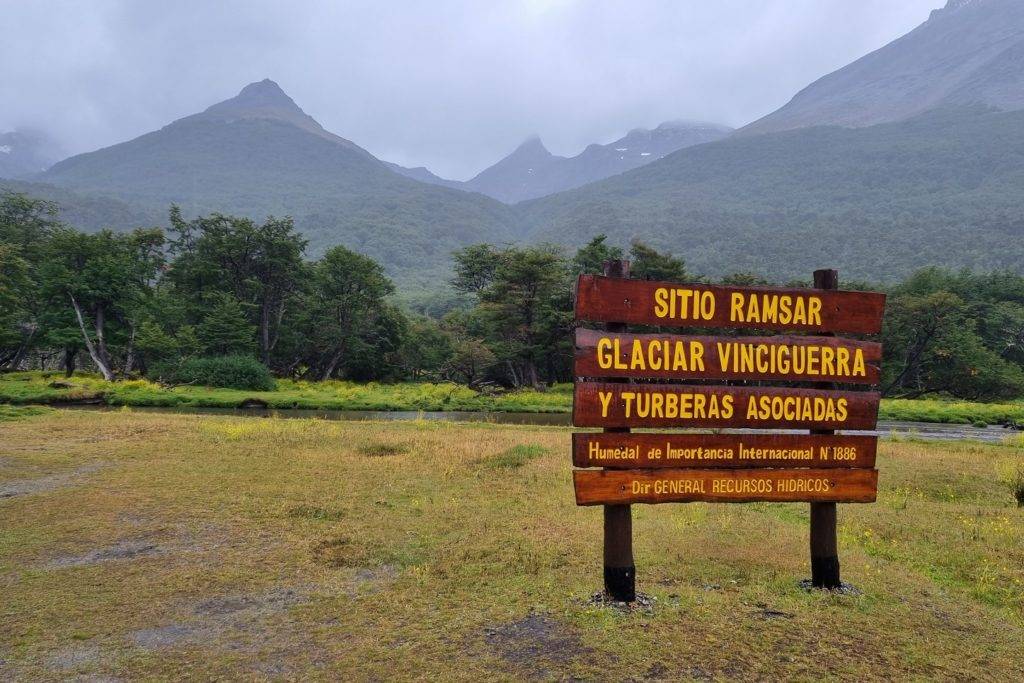

Tierra Del Fuego National park
A visit to the national park cannot be missed. But comparing with the other hikes close by, this place is more crowded and you need to pay a park fee of 2100 pesos (you get a 50% discount if you go 2 days). So if you have less time, then I recommend to do the free tours like Estancia Tunel, Vincinguerra and Martial Glaciar. But unlike the other places, you can go camping here on one of the two free camping sites. I did not do this but I can recommend to do this if you have more time. There are 4 well marked hiking trails in the National park and you can get an map at the entrance:
- Pampa Alta Trail (moderate difficulty, 5 km): Halfway the trails is where the Tren del Fin del Mundo ends (one way) and from where you can walk to trail number two and the first camping site. At the end of the trail you can find a little post office where you can send postcards from the end of the world to your lover, family or friends. You can also get a stamp for you passport (but it cost you 500 pesos). The man at the post office works there for thirty years, you can find lots of pictures of himself with his dog on the wall.
- Costera trail (moderate difficulty, 8 km): From the post office the trail starts. The trail follows the shoreline and travel through evergreen beech and winter barks forest. At the end you reach the Alakush visitors center. From there you can take several small hikes in Lapataia area what I did and it is possible to camp here.
- Hito XXIV trail (moderate difficulty, 7 km): A walk along the North-West bank of Acigami lake up to Argentina’s international border with chile.
- Cerro Guanaco trail (strenuous difficulty, 4 km): The summit of Cerro Guanaco offers an outstanding view of the Fuegan mountain range and its peatbogs. The trail starts at Acigami lake parking lot. On the way to Hito XXIV trail, and after crossing Guanaco Creek, there is a detour properly marked on the right. The whole trail goes quite steeply up deep slopes.
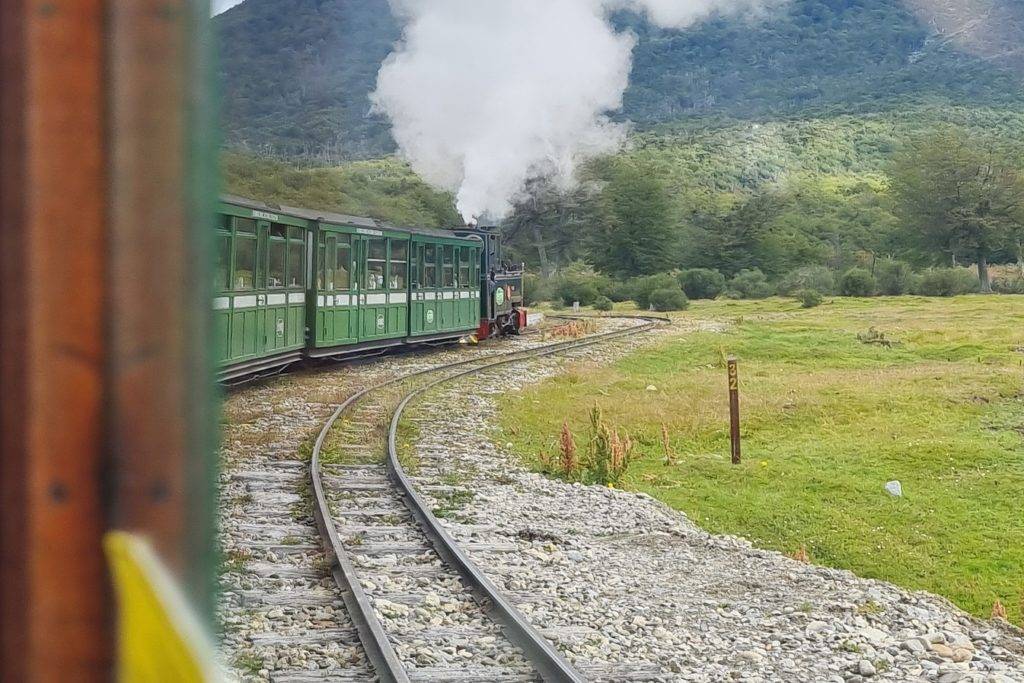
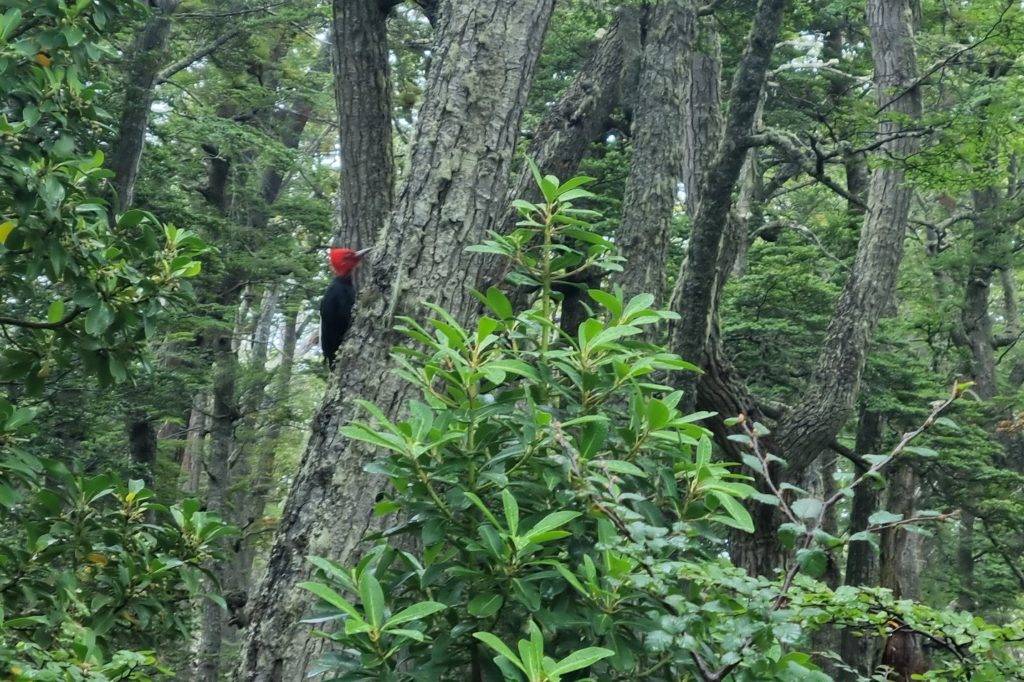
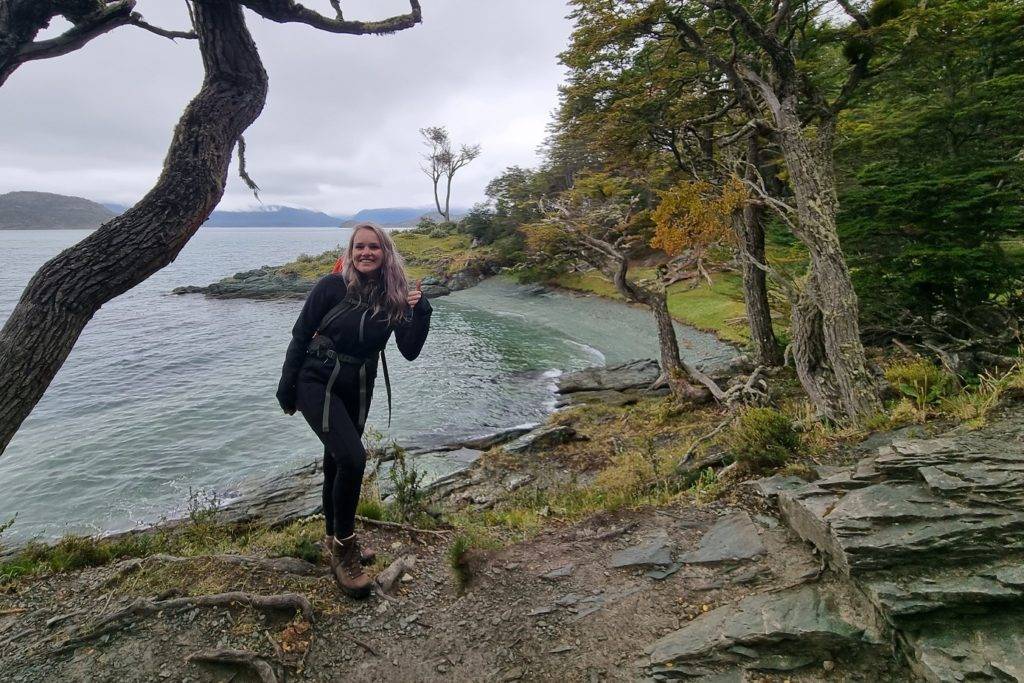
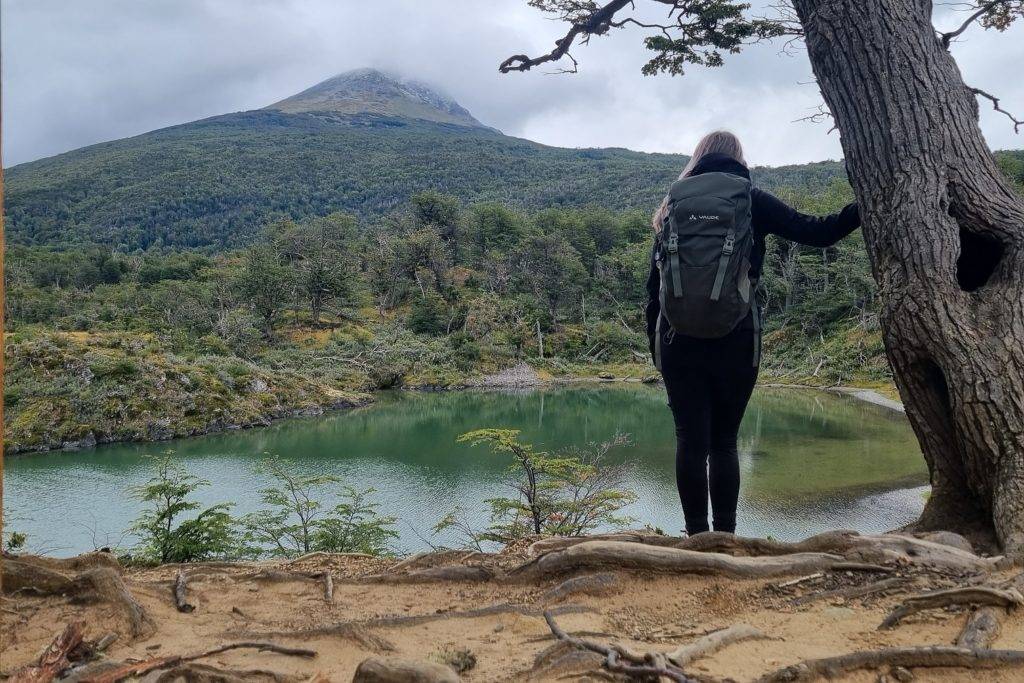
Other recommendations
I did not take all the hiking trails in the area, but what I can recommend and what I’ll do if I come back is visiting the laguna Esmerala lake and the Martial Glacier. Both are a half-day hike and you can reach these trails by shuttlebus or taxi.
# 4 - Boat trip Beagle Channel
One can hardly consider the southern Patagonian coast without taking a cruise or boat trip. You’re likely to see lots of wildlife like sea lions, seals, penguins, whales and a vast array of birds. The Ushuaia Beagle Channel Cruise is no exception to that. I skipped this trip, because I sailed across the beagle channel to reach Antarctica. But if Antarctica is too expensive, this is a great way to get to embark on the same stretch of water that was charted by Darwin and Captain Fitzroy’s ship and see some similar wildlife as in Antarctica.
You can buy a ticket next to the tourist office. Prices ranges from 3000-8000 pesos.

# 5 - Antarctica
From the small place Ushuaia I went on an expedition cruise to Antarctica. It’s only possible to go on an expedition from October till end of March– in the summer. The prices variates from 6000-15.000 euro. These prices depends on the route (directly to Antarctica, or along the “bird” islands) you go, for how many days and if you can get a last-minute deal. The expedition is led by expert guides who will tell you all about the history and extraordinary nature of Antarctica. It was a once-in-a-life-time-experience!
Click on the link below to read more about my visit in Antarctica.

# 6 - Winter activities
Ushuaia is also very nice to visit in the winter. It offers lots of winter activities like skiing at Cerro Castor or dogsledding in Valle de lobos, the wolf valley. Also a fun winter activity is ice skating at the devils lagoon. Its called like this because dogs disappeared in the lagoon. They thought the devil took them. But probably they felt through the ice and drowned.